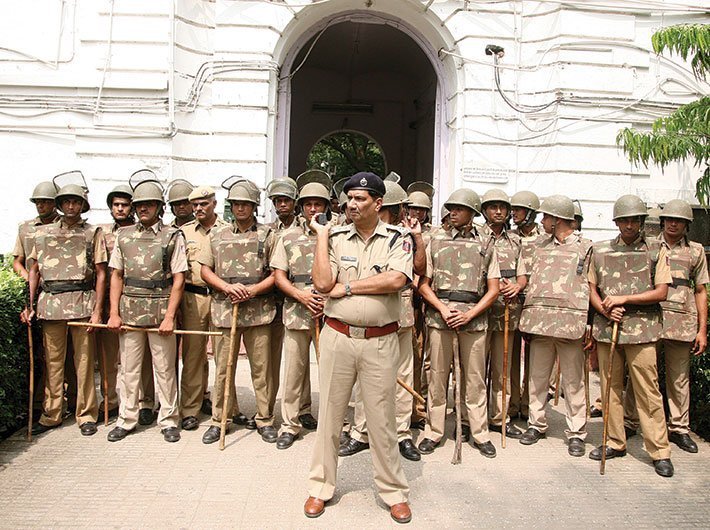PRS report on Police Reforms highlights key issues that affect proper functioning of police
- Expenditure on Police accounts for only three percent of the central and state government budgets.
- State police forces had 24% vacancies (about 5.5 lakh vacancies), 7% in central forces in January 2016.
- There is a severe shortage in weaponry and vehicles.
- Only 14% of funds dedicated for modernisation of infrastructure were used by the states.
- Crime per lakh people has increased by 28% from 2005 to 2015.
These are some revelations in PRS’ analytical
report by Anviti Chaturvedi on police reforms released in June this year. The average spending on police is only three percent of the total budget by states and centre. Odhisa spends lowest 1.1 percent of its budget on police, followed by Gujarat (1.7%).
Karnataka, Himachal Pradesh, Telangana and Madhya Pradesh also spend less than 2 percent of their budget on police. Manupur spends highest (8.7%) amount on police.
In 2015-16, states (excluding union territories) spent Rs 77,487 crore on state police forces, including on salaries, weaponry, housing and transport. Bulk of this expenditure was on revenue items, like salaries, because police is a personnel-heavy force.
Currently there are significant vacancies within the state police forces and some of the central armed police forces. As of January 2016, the total sanctioned strength of state police forces across India was 22,80,691, with 24% vacancies (i.e. 5,49,025 vacancies).
Overburdened force
States with the highest vacancies in 2016 were Uttar Pradesh (50%), Karnataka (36%), West Bengal (33%), Gujarat (32%) and Haryana (31%). In the same year, the seven central police forces has a sanctioned strength of 9,68,233 and 7% of these posts (i.e. 63,556 posts) were however lying vacant. Sashastra Seema Bal (18%), Central Industrial Security Force (10%), Indo-Tibetan Border Police (9%) and National Security Guards (8%) had relatively high vacancies.
The UN recommends 222 police for one lakh people. Going by the sanctioned number of policemen in India, we have only 181 police for one lakh people. However, given the vacancies, the actual strength is only 137 police for one lakh people. Thus policemen in India have enormous workload and long working hours, which negatively affects their efficiency and performance, the report says.
More facts from the report
- In 2015-16, the centre and states allocated Rs 9,203 crore for modernisation. However, only 14% of it was spent.
- As of January 2015, states had a total of 1,63,946 vehicles when they actually required 2,35,339 vehicles.
- Weaponry of several state police forces is outdated, and the acquisition process of weapons is slow, causing a shortage in arms and ammunition.
- An audit of the Rajasthan police force (2009 to 2014) concluded that there was a shortage of 75% in the availability of modern weapons against the state’s own specified requirements.
- Police Telecommunication Network (POLNET) is not functional in many states.
- Seniors employ constables as orderlies to do domestic work, which erodes their morale and motivation, and takes them away from their core policing work.
